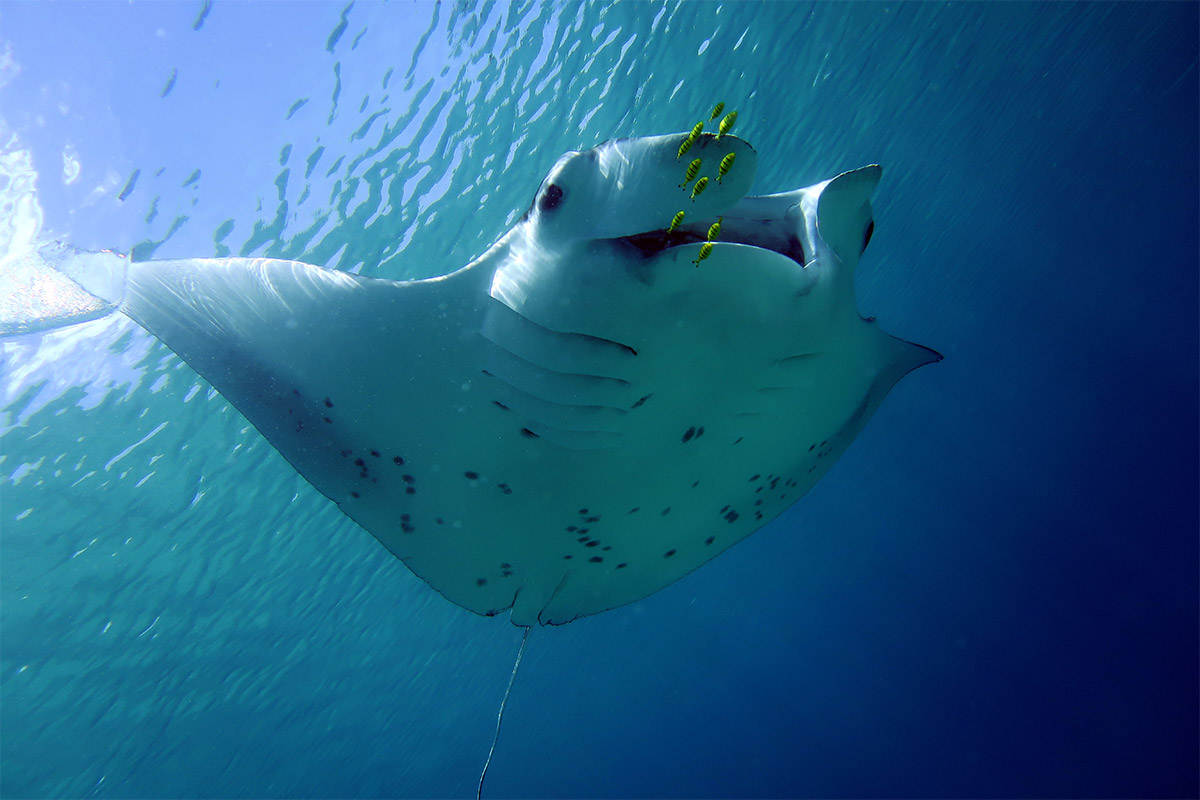

The belly is white with some black spots. The dorsal part of the body is black with some white parts on the head and on the tips of the lateral fins. The first morph is called “Chevron.” This is the classic manta color pattern. Genetic testing will likely confirm or reject this hypothesis in the near future.īoth species of manta present three color morphs. This possible species has characteristics between the Oceanic and Reef Manta Rays. It’s worth mentioning that research regarding a third species of manta ray, tentatively referred to as the Atlantic or Caribbean Manta, is under way. Consequently interactions with this animal are more difficult. It’s non-functional.Ĭompared to the reef manta, this mysterious creature is harder to see because it tends to live in the open ocean and makes longer migrations. It’s an evolutionary remnant of the time they were sting rays (mantas evolved from sting rays). Furthermore the lighter design on the dorsal side is T-shaped.Īt the base of the giant manta’s tail is a fist-sized lump of cartilage.

Its ventral part is white with black spots, but unlike the Resident Reef Manta, the pattern is not present in the area between the gills.

They can weigh up to 4,400 pounds (2,000 kilos)! This manta ray can reach a considerable size, with an average width of 13 to 16.5 feet (4-5 meters) and sometimes up to 23 feet (7 meters). Mantas are huge but not dangerous at all! The sting that is present in Stingrays is absent from all manta rays, so relax. This species weighs around 2,900 pounds (1,300 kilos).įemales are larger than the males to accommodate their pup during “ pregnancy.” The ventral part of the body is white with black spots, while the dorsal side is darker, forming a distinctive white or grey Y-shape along the ‘shoulders.’Īs the name suggests, this species usually lives along coral reefs and makes short migrations according to the abundance of food. The exception to this rule is the population of Mozambique, in which they can grow up to 13 to 15 feet (4-4.5 meters) wide. Of the two species, the Reef Manta is the smallest, with an average disc-width of 10 to 11.5 feet (3-3.5 meters).
#Giant manta ray how to
Now let’s see how to distinguish between the two species of manta ray. It’s thought that they can live between 40 and 50 years, but we still need more information to be able to establish their exact longevity. Both are plankton feeders, so instead of teeth, they use their gills in order to filter the microscopic food from the water. There are two species of manta: the Resident Reef Manta Ray and the Giant Oceanic Manta Ray. Instead, they move within the water column as if they are flying, elegantly using their modified, wing-like pectoral fins. Their body is flattened, but they no longer live along the bottom of the sea. They have existed for around 5 million years, and they’re closely related to other rays you may find in the ocean.



 0 kommentar(er)
0 kommentar(er)
